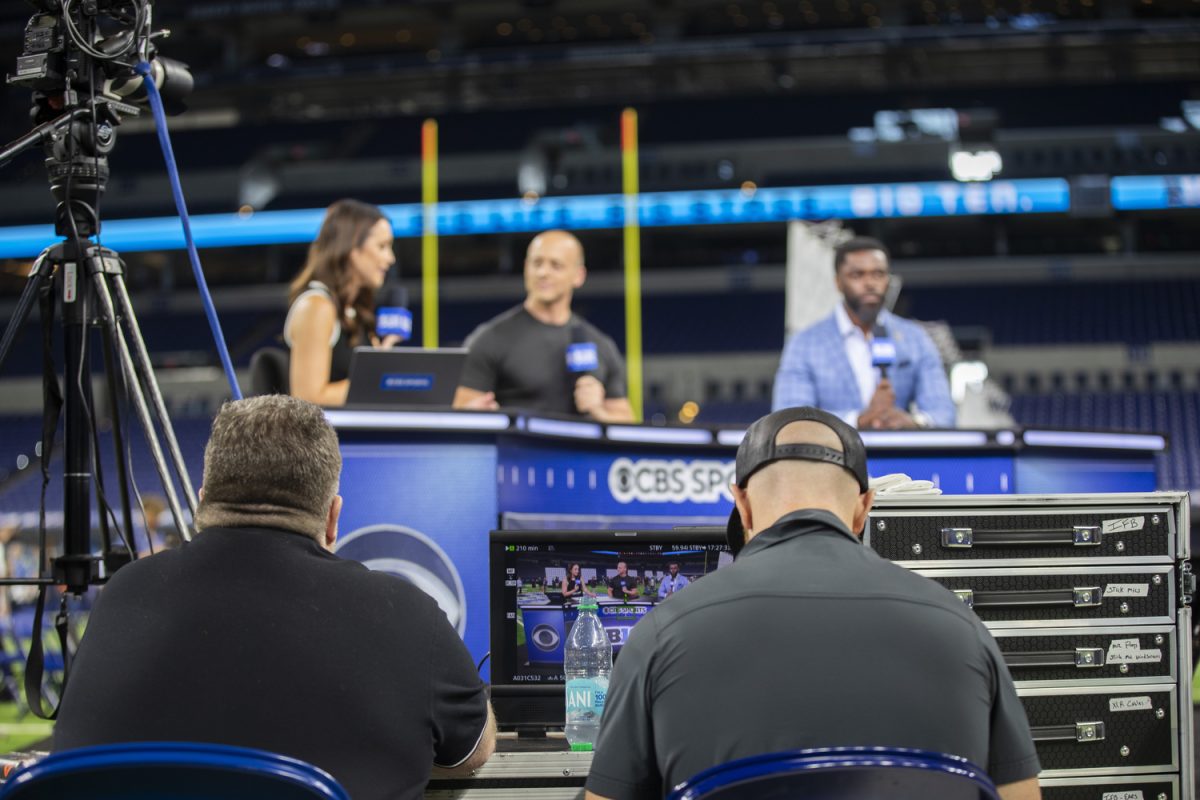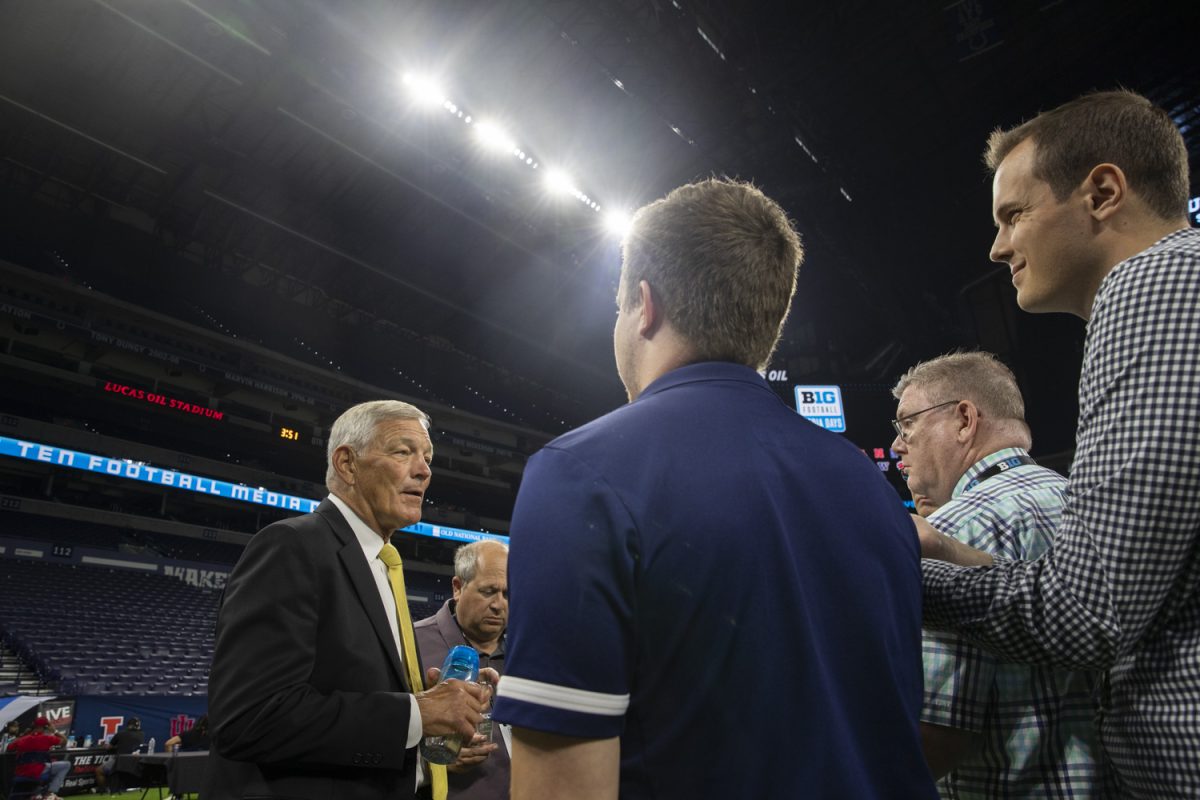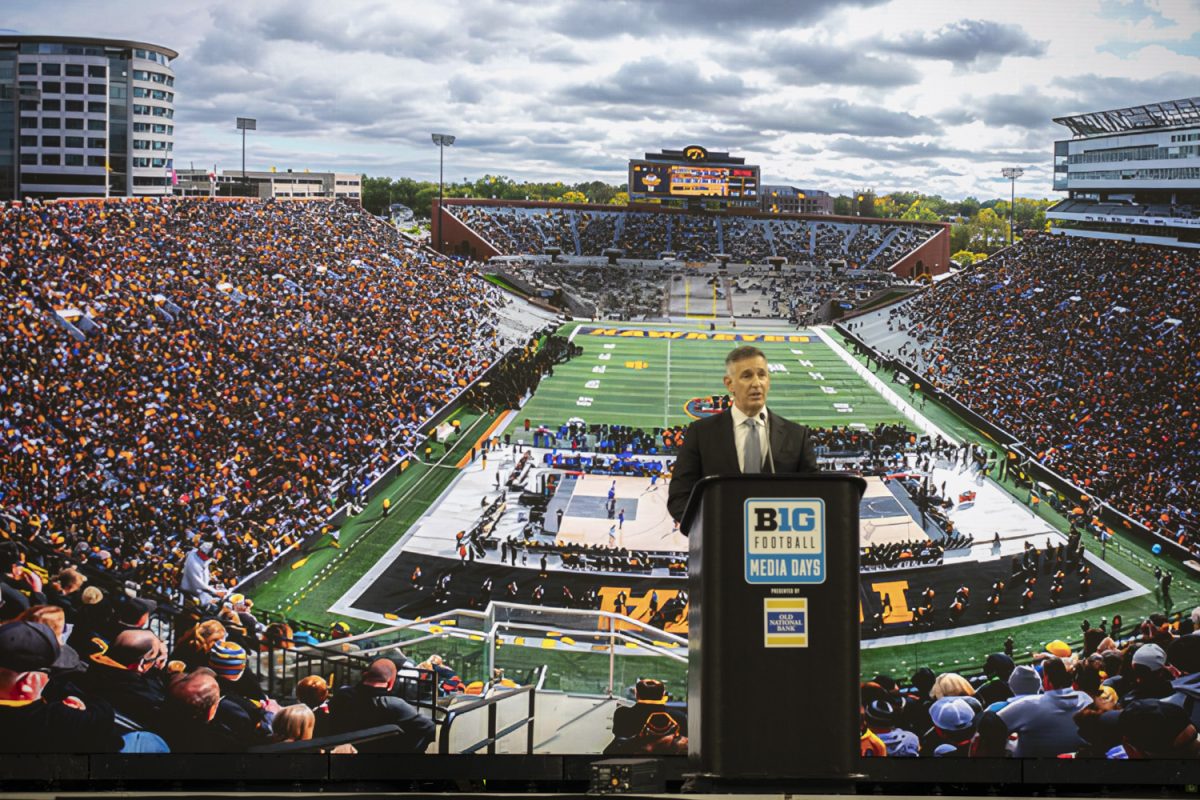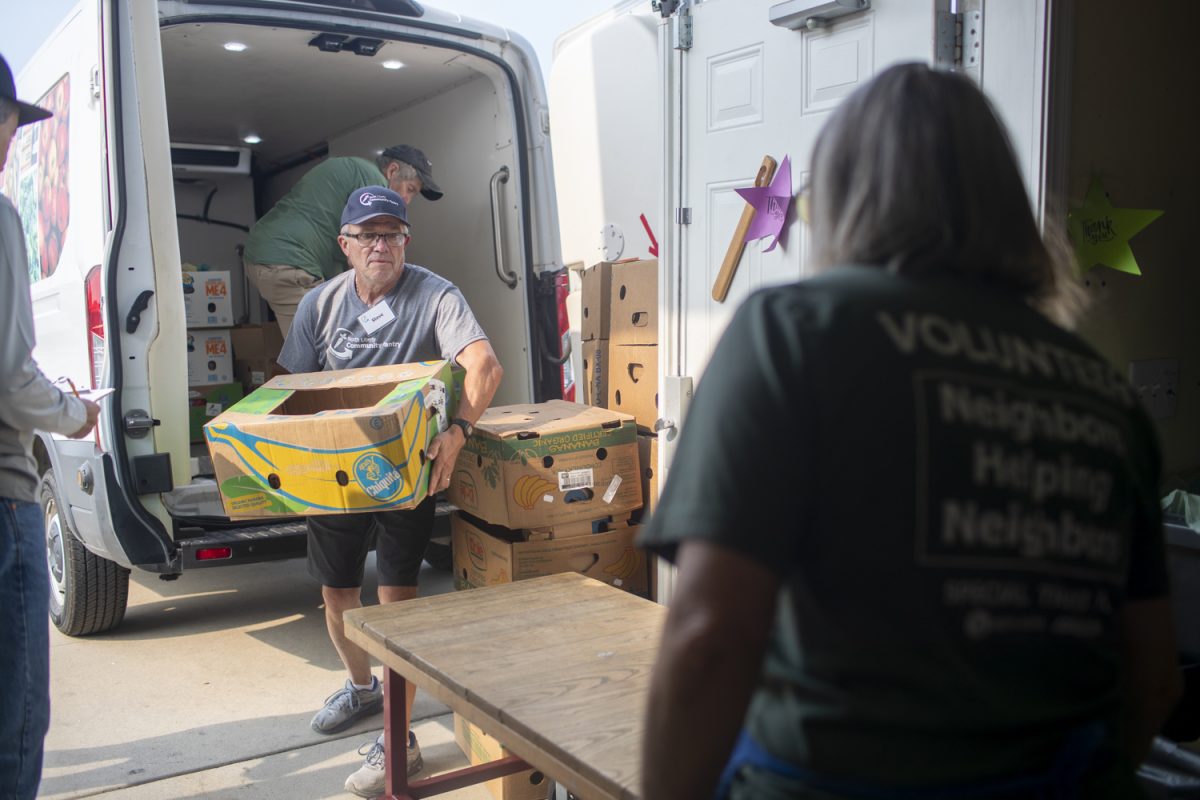By Madeline Murphy Smith | [email protected]
Although Van Allen is often associated with the name of a popular building on campus, for many around the world, it’s one of the most famous names in science history.
The Main Library honored James Van Allen’s work at the grand opening of the new art gallery for undergraduates on Tuesday. The exhibit will run through April 8.
Van Allen is credited with discovering the Earth’s radiation belts through his involvement with Explorer 1, the first American satellite to be launched into space.
After the Soviets launched Sputnik — the first successful satellite to orbit Earth — America shifted into high gear to launch its own satellite, which later was known as Explorer 1.
Van Allen helped build the cosmic-ray detectors for Explorer 1. The data sent back to Earth helped Van Allen and his team discover Earth’s radiation belts.
The belts circling Earth were named the “Van Allen Radiation Belts” after his discovery.
Katie Hassman, the Main Library undergraduate engagement librarian, said students seem to be excited about the opening of the new gallery.
[youtube id=”usbzvLNrMUk” mode=”normal”]
Hassman said she’s excited to have a museum with quality space at a location accessible for students to use at their leisure.
“I tell students that they don’t need to explore the whole gallery in one sitting,” she said. “Explore it in sections in between classes.”
She said having Van Allen’s work be the first exhibit for the gallery is humbling for UI students, because it shows that the research scientist was just like any other ordinary guy walking the streets of Iowa City.
Jen Masada, the strategic communication director for the UI Libraries, said having Van Allen’s work on display for the grand opening of the new art gallery at the Main Library was a no-brainer.
“The idea behind this exhibit is to highlight one of the University of Iowa’s most prominent researchers,” she said.
Throughout the exhibit, Van Allen’s work is strategically placed in the gallery to tell the story of his scientific revelations and show a new side of a man who is renown in the world of science.
When Sputnik was launched, Van Allen noted in a personal journal that it was a “Brilliant Achievement” for the Soviets.
Masada said Van Allen’s use of expressions in his journals was unusual for a scientist, because they typically try to remain unbiased in their work.
“He was very impassioned with his work,” she said.
Donald Gurnett, a UI professor of physics/astronomy, can personally attest to Van Allen’s passion for his work. Gurnett was 19 when he worked under Van Allen following the discovery of the radiation belts.
“He was the father of space science,” he said. “Space started with Jim Van Allen, and more importantly, it started here at the University of Iowa.”
Gurnett said he admired Van Allen for being a consistent research scientist and for always being curious on how things worked. He said it was these traits that attracted him to Van Allen’s work and inspired him to reach out to Van Allen for a job.
“I went in his office, and he was instantly famous after Explorer 1. But I asked if he had any work for me, and he offered me a job as an electrical engineer,” he said. “Van Allen helped put the University of Iowa on the map in terms of space science. Everyone viewed us as the center of the universe in the terms of space science. It was very stimulating environment to be working in.”
Gurnett said he remembers Van Allen as a very popular professor at the university who despite his fame was still personable. He said felt he could approach Van Allen with anything.
“I wish he was here so I could talk to him today.”










